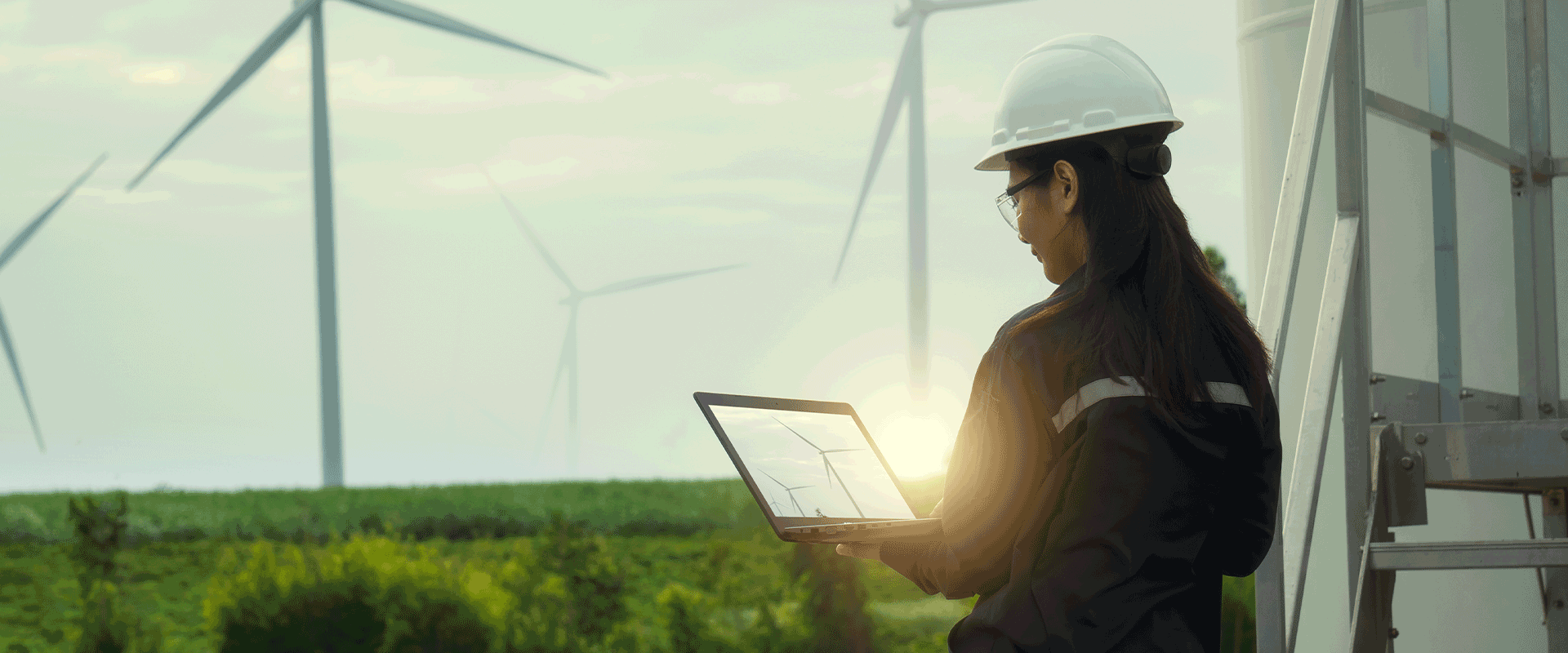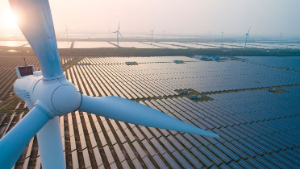As the transition gathers pace, these challenges are attracting increasing investment and innovation focus. System technology (including grid support, efficiency, storage, etc. — often collectively referred to as ‘Energy 4.0’) is advancing rapidly, and there is a growing range of opportunities for investors to participate. We have set out a range of themes and examples in a structured framework below.
Optimisation of renewables generation
(Resolving intermittency/variability challenges; improving reliability/efficiency)
Opportunities:
(a) Intermittency/variability
- Storage technologies and business models
- Batteries and related infrastructure (e.g. Tesla grid-scale battery solutions in Australia, vehicle charging stations)
- Hydrogen (e.g. electrolysis, storage, fuel cells and engines) (e.g. recent acquisitions made by Hensoldt and Worthington or the Snam/De Nora deal in 2020)
- Electric vehicle-to-grid (V2G) or vehicle grid integration (VGI) solutions (e.g. Virta, Origami Energy, Marubeni, Smartest Energy and Grid Edge are rolling out a new proof of concept for V2G )
- Aggregation and virtual power plants (e.g. recent acquisition of NextKraftwerke by Shell)
- Demand management/demand response at the end-customer level (industrial, commercial and individual ‘prosumers’) using new technologies and software, solutions, and services
- Players like Enernoc and Opower are offering customer-centric solutions for demand response, load control, dynamic pricing, etc.
- Offers linked to increasing smart-metering and sub-metering roll-out in a range of countries, receiving increased interest from financial investors
- Smart procurement offers using new software and technologies
- Use of energy trading and financial vehicles/approaches to hedge availability, with accompanying digital automation solutions
- Over the medium to long term, electricity market structures are likely to evolve to place a higher premium on availability, providing further support for this type of initiative
(b) Reliability and efficiency
- More efficient components and systems (e.g. solar tracking systems, inverters, mounting systems) serving renewables generation
- Services/Operations & Maintenance to maintain and improve renewables (e.g. offshore wind services)
- Predictive asset management and monitoring systems for generation equipment
- Related digital and other services/engineering/software, including for remote services
Solving T&D grid structure issues
(Distributed energy and multi-source/multi-directional flows, creating instability and complexity in the T&D network)
Opportunities:
- Smart T&D equipment and systems to stabilise the network and improve power quality (for example, Italy’s TWO Terna has a strong focus on increasing digitalisation in its 2020-24 strategic plan)
- More sophisticated ’smart’ T&D equipment like switchgear with integrated digital elements (e.g. for remote measurement and monitoring) being developed by major players like ABB but also smaller OEMs
- System equipment specially adapted to renewables (e.g. energy-efficient renewables transformers)
- Other developments in power electronics and automation and control
- Storage-based systems to provide short- or longer-term system backup
- Predictive asset management and monitoring systems, including related software
Full life cycle impact and sustainability of renewables
Opportunities:
- Opportunities to improve material usage and develop new technologies that change resources requirements, or new sustainable raw materials supplying the energy sector
- Sustainable logistics and sourcing for the renewables supply chain
- Solutions for recycling and reuse of battery, solar photovoltaic and wind turbine assets (e.g. in November 2020, the world’s largest-scale lithium-ion battery recycling facility was funded; the plant is a JV between Northvolt and Hydro)
- Solutions for sustainable decommissioning of renewable assets (e.g. full retrieval of offshore wind turbine foundations vs leaving segments buried in the seabed)




